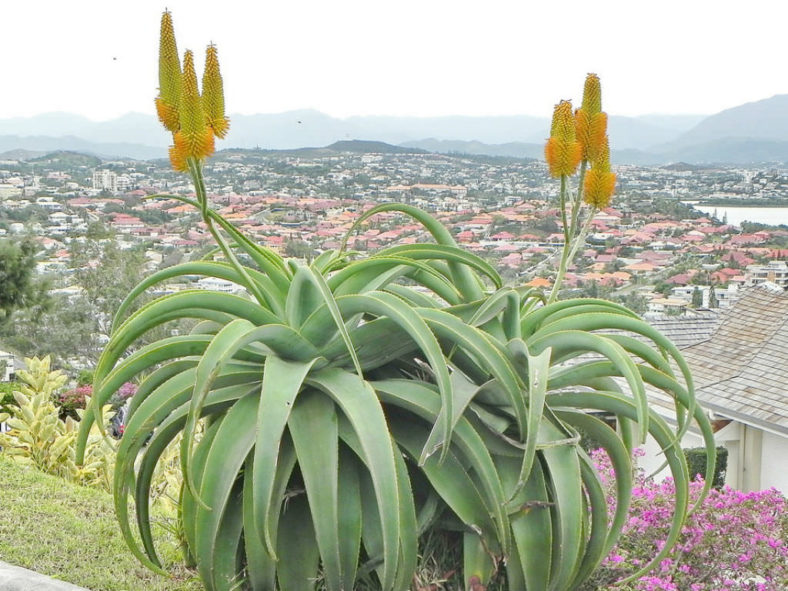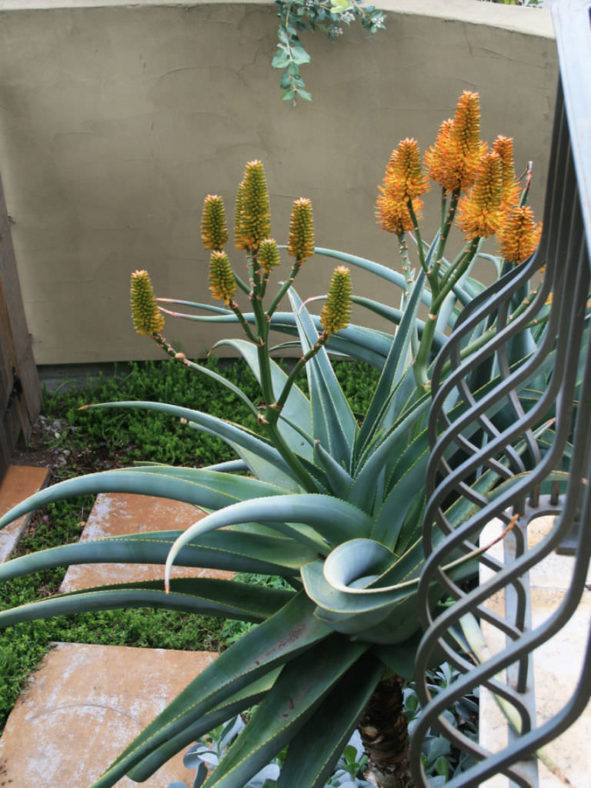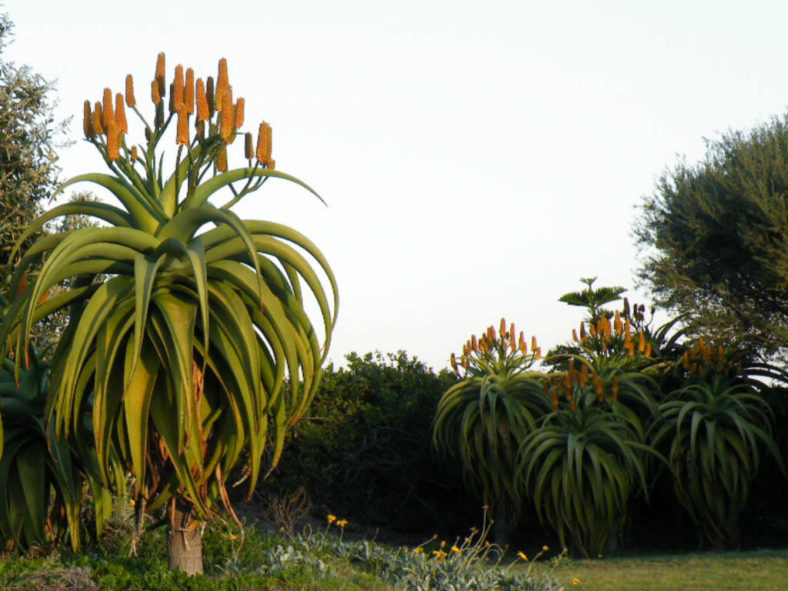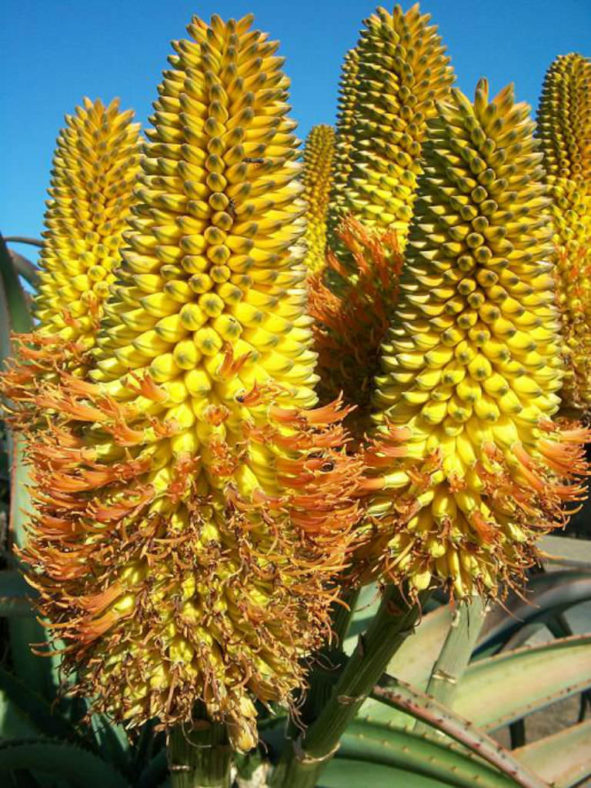Scientific Name
Aloe thraskii Baker
Common Name(s)
Coast Aloe, Dune Aloe, Strand Aloe
Synonym(s)
Aloe fraskii
Scientific Classification
Family: Asphodelaceae
Subfamily: Asphodeloideae
Genus: Aloe
Etymology
The specific epithet "thraskii (THRAS-kee-eye)" honors Mr. Thrask, of whom nothing besides his name is known.
Origin
Aloe thraskii is native to South Africa (KwaZulu-Natal and the Eastern Cape). It only grows in almost pure sand right at the beach margin among low coastal vegetation or taller bushes.
Description
Aloe thraskii is a tree-like succulent with a simple erect stem, gracefully recurved densely rosulate leaves, and old dried leaf that remains persistent at the base of the stem. It usually grows up to 6.6 feet (2 m) but sometimes can reach a height of up to 13.1 feet (4 m). The leaves are dull green to glaucous, deeply channeled, sometimes even touching the skirt of old, dried leaves around the stem. They can grow up to 2.25 feet (1.6 cm) long and 8.8 inches (22 cm) wide, gradually tapering to the apex, and have margins armed with small reddish deltoid teeth.
The buds are greenish to orange, while the open flowers are lemon yellow to pale orange, with greenish tips. The flowers can measure up to 1.2 inches (3 cm) long and appear on well-branched inflorescences with upright, broadly cylindrical racemes. The inflorescence in young plants is one only with 4 to 6 racemes, while in large fully-grown specimens, 3 to 4 simultaneously, each with 4 to 8 branches producing a total of 15 to 25 racemes. The fruits are oblong-trigonous, markedly 3-angled capsules measuring up to 1.2 inches (3 cm) long and up to 0.6 inches (1.5 cm) wide. They are green, turning reddish-brown with age.
Aloe thraskii is closely related to Aloe excelsa and Aloe rupestris but is distinguished by its strongly recurved leaves.

Hardiness
USDA hardiness zones 9b to 11b: from 25 °F (−3.9 °C) to 50 °F (+10 °C).
How to Grow and Care
Aloes are very forgiving plants. However, as with all succulents, Aloe must never be allowed to sit in stagnant water, and the plant should be carefully monitored to watch for signs of overwatering.
These succulents are not particularly fast-growing and will only rarely need repotting. However, in the spring, repot Aloes tipping over their pots or have ceased growing. Use a fast-draining potting mix with one-third of sand or pebbles. When repotting a larger plant, dividing the root ball is possible. Some varieties of Aloe will send off offsets that can be potted independently.
Aloe plants need strong, bright light. Once acclimated, they can withstand full summer temperatures. In the winter, provide bright light. It prefers warmer temperatures of 70 to 80 °F (21 to 27 °C) but will survive down to 40 °F (4.5 °C). Feed with a succulent fertilizer in the summer only. Suspend feeding in the winter as the plant goes dormant.
See more at How to Grow and Care for Aloe.
Links
- Back to genus Aloe
- Succupedia: Browse succulents by Scientific Name, Common Name, Genus, Family, USDA Hardiness Zone, Origin, or cacti by Genus
Photo Gallery
Click on a photo to see a larger version.



